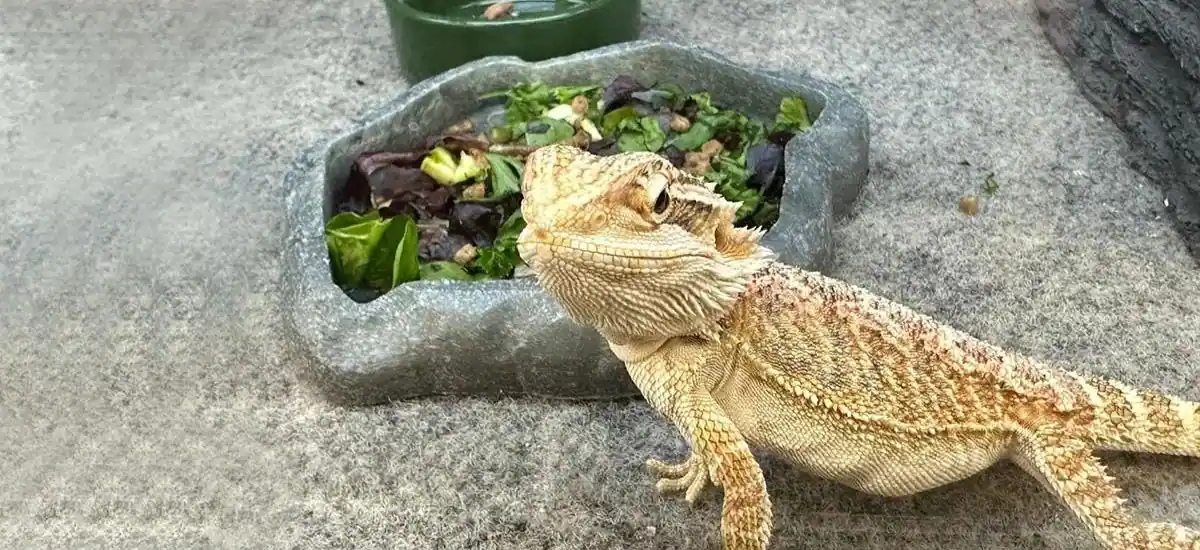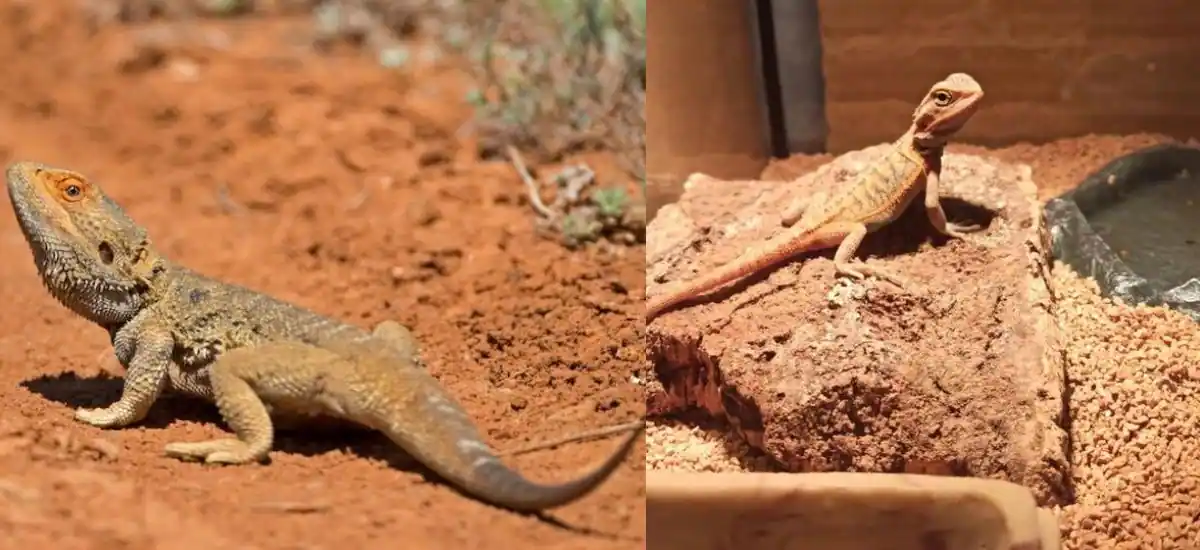When it comes to feeding bearded dragons, variety is not just the spice of life—it’s essential for their health and well-being. As exotic pets, bearded dragons have specific dietary needs that mimic their natural diet in the wild. While insects like crickets and mealworms form the backbone of their nutrition, incorporating vegetables can provide the necessary vitamins and minerals.
But not all veggies are created equal in the eyes of a bearded dragon. Today, we’re turning our attention to Swiss chard, a nutrient-packed leafy green, to see if it’s fit for our scaly companions
What is Swiss Chard?
Swiss chard stands out with its vibrant leaves and sturdy stalks, often showcasing a rainbow of colors. This vegetable is not only a feast for the eyes but also a powerhouse of nutrients.
Nutritional Breakdown:
- Vitamins: Swiss chard is rich in vitamins A, C, and K, essential for maintaining good vision, immune function, and blood clotting.
- Minerals: It offers a good source of magnesium, potassium, and iron, which are vital for muscle function, fluid balance, and oxygen transport.
Here’s a quick look at its benefits:
- Antioxidants: Loaded with antioxidants, Swiss chard can help combat oxidative stress in reptiles, just as it does in humans.
- Low in Calories: It’s low-calorie, making it a suitable snack that doesn’t contribute to unhealthy weight gain.
Swiss Chard and Bearded Dragons: Is It Safe?
1. The Good: Swiss chard’s vitamin-rich profile can be a boon for bearded dragons, provided it’s fed in moderation. These vitamins support various bodily functions, from vision to blood health, which are crucial for a bearded dragon’s overall vitality.
2. The Concerns: However, Swiss chard contains oxalates, compounds that can bind with calcium and make it unavailable to your pet. This is particularly concerning in bearded dragons, who require ample calcium for bone health.
3. Safe Feeding Practices:
- Moderation is Key: Introduce Swiss chard slowly into your dragon’s diet, mixed with other oxalate-low greens.
- Balance with Calcium: Ensure that foods high in calcium are also part of the diet to counteract the binding effect of oxalates.
4. Risk Assessment: While the nutritional benefits are clear, the risks associated with oxalates cannot be overlooked. Owners must weigh the benefits of nutrient diversity against the potential for nutrient binding and decide what’s best for their pet’s health.
Nutritional Benefits of Swiss Chard for Bearded Dragons
A Closer Look at the Benefits: Swiss chard isn’t just a pretty face in the vegetable world; it’s a nutritional powerhouse. Let’s unpack the specific benefits that might make Swiss chard a valuable addition to your bearded dragon’s diet:
- Vitamin A: Essential for maintaining healthy vision, skin, and immune functions, Swiss chard’s high vitamin A content can help keep your dragon’s eyes twinkling and their skin supple.
- Vitamin C: This antioxidant supports the immune system and can aid in wound healing, which is vital for active reptiles.
- Magnesium: Important for nerve and muscle function, magnesium in Swiss chard can help ensure your bearded dragon’s movements are smooth and coordinated.
Incorporating Swiss Chard: To tap into these benefits, Swiss chard should be finely chopped and mixed with other greens to create a varied salad that appeals to your pet’s palate and health.
Risks Associated with Feeding Swiss Chard to Bearded Dragons
Understanding the Risks: While the benefits of Swiss chard are tempting, it’s crucial to consider the full picture, especially the risks posed by its oxalate content.
- Calcium Absorption: Oxalates bind with calcium, which is a crucial mineral for bearded dragons, especially in supporting bone health and preventing metabolic bone disease.
- Recommendations for Safe Feeding: To minimize risks, Swiss chard should only be a small part of your bearded dragon’s diet. Combining it with calcium-rich foods like collard greens can help counteract the negative effects of oxalates.
Table: Swiss Chard Feeding Guidelines
| Frequency | Amount | Preparation |
|---|---|---|
| Once a week | Small handful | Washed and chopped |
How to Prepare Swiss Chard for Your Bearded Dragon
Step-by-Step Guide to Preparation: To ensure that your bearded dragon enjoys the benefits of Swiss chard safely, follow these preparation tips:
- Wash Thoroughly: Always wash Swiss chard thoroughly to remove any pesticides or contaminants.
- Chop Finely: Cutting Swiss chard into small pieces will make it easier for your dragon to eat.
- Mix with Other Greens: Create a balanced mix by adding vegetables like squash and bell peppers to provide a variety of nutrients and textures.
- Occasional Treat: Given the risks associated with oxalates, Swiss chard should be offered as an occasional treat rather than a staple.
Comment for Later Addition: Consider adding an infographic here that illustrates the step-by-step preparation of Swiss chard for bearded dragons, highlighting the importance of washing and chopping.
Feeding Frequency and Portion Size
Determining the Right Balance: Feeding your bearded dragon the right amount of Swiss chard is crucial to maintaining their health. Here’s what you need to know to strike the perfect balance:
- Frequency: Swiss chard should be fed sparingly, ideally not more than once a week to avoid any potential issues with oxalates.
- Portion Size: A small handful of Swiss chard, mixed with other greens, is sufficient. This ensures that your dragon gets the benefits without the risks of too much oxalate intake.
Keeping a Dietary Log: Maintaining a log of your bearded dragon’s diet can help you monitor their intake of various foods and adjust as necessary based on their health and behavior.
Alternatives to Swiss Chard
Exploring Other Options: If you’re concerned about the oxalate content in Swiss chard or simply want to mix things up, several other vegetables are safe and beneficial for bearded dragons:
- Collard Greens: Low in oxalates and high in calcium, making them an excellent choice.
- Dandelion Greens: Rich in vitamins and minerals, and generally well-loved by bearded dragons.
- Butternut Squash: Offers a nice change in texture and is rich in vitamins.
Table: Alternative Greens for Bearded Dragons
| Vegetable | Benefits | Recommended Frequency |
|---|---|---|
| Collard Greens | High in calcium, low in oxalates | 2-3 times a week |
| Dandelion Greens | Nutrient-dense, supports digestion | 2 times a week |
| Butternut Squash | High in Vitamins A and C | Once a week |
Conclusion
Swiss chard can be a colorful and nutritious addition to your bearded dragon’s diet, but it comes with caveats. The key to safely including Swiss chard in your pet’s diet lies in moderation and balance. By carefully monitoring intake and combining it with other suitable greens, you can provide your bearded dragon with a varied and healthy diet.
Remember, every bearded dragon is unique, and their dietary needs can vary. Always consult with a vet if you’re unsure about introducing a new food into your pet’s diet.
Frequently Asked Questions
Q1. Can Swiss chard replace staple greens in my bearded dragon’s diet?
Ans. No, due to its oxalate content, it should only supplement the diet, not dominate it.
Q2. How do I know if my bearded dragon isn’t reacting well to Swiss chard?
Ans. Watch for signs of discomfort or poor digestion, such as reduced appetite or unusual stool.
Q3. Are there any fruits that can be fed alongside Swiss chard?
Ans. Yes, fruits like blueberries and sliced apples can be added occasionally for variety.
Related Posts:-
- Best Bearded Dragon Breeders
- Can Bearded Dragons Eat Bell Peppers?(Full Guide)
- Bearded Dragon Third Eye Explained





